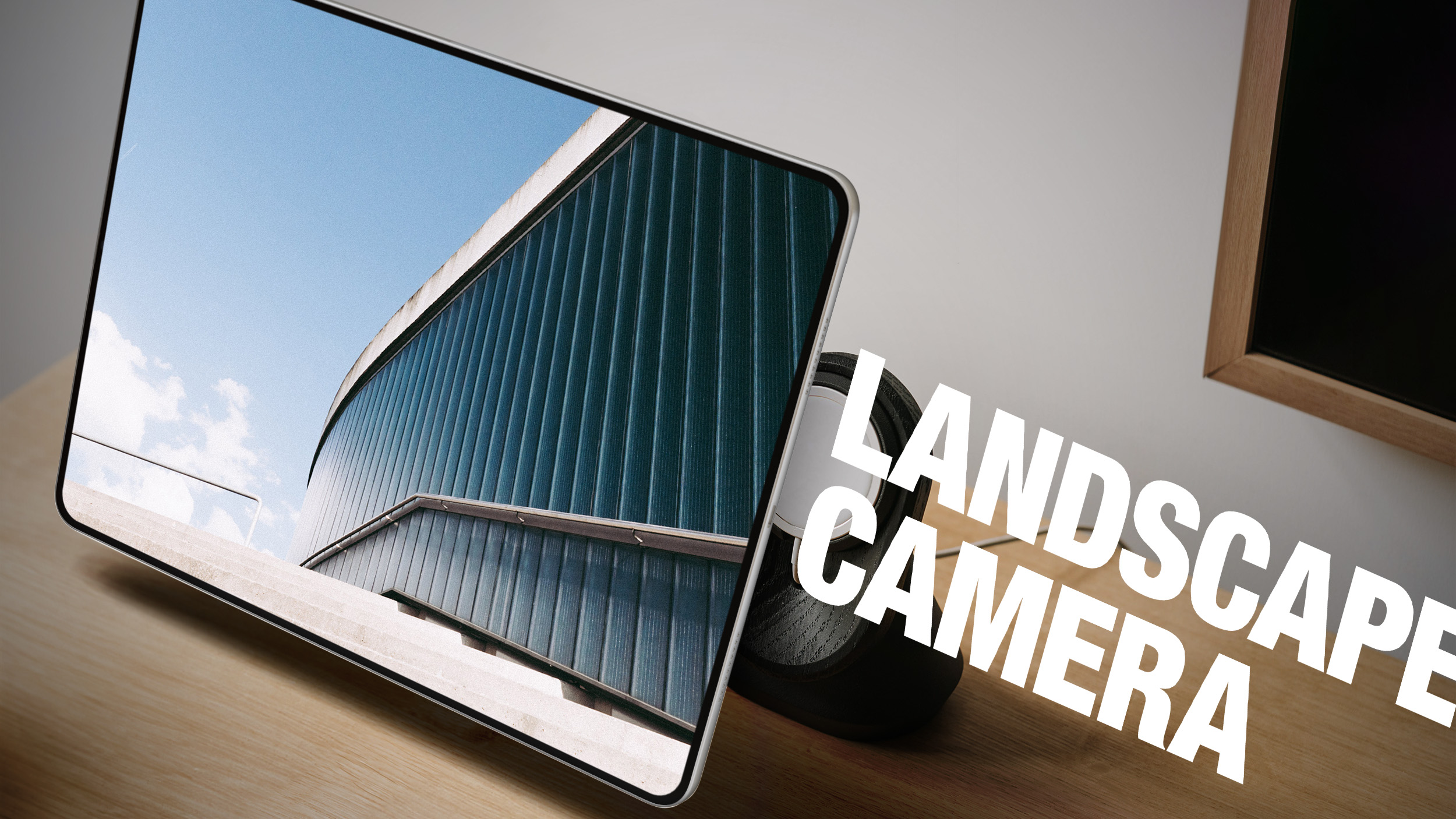The next-generation iPad Pro will feature a landscape-oriented front-facing camera for the first time, according to the Apple leaker known as "Instant Digital."

Instant Digital reiterated the design change earlier today on Weibo with a simple accompanying 2D image. The post reveals that the entire TrueDepth camera array will move to the right side of the device, while the microphone will remain on the top and simply be centered.
Currently, the front-facing camera of both the iPad Air and iPad Pro resides on the top of the device, which means that the camera is positioned to the left when the device is being used in landscape, such as with a Magic Keyboard. Apple relocated the front-facing camera of the 10th-generation iPad to the side of the device to provide a better experience in landscape and the company has not launched a new iPad since then.
In January, code discovered in iOS 17.4 suggested the next iPad Pro's TrueDepth camera array would be moved to the side of the device. "During Face ID setup, iPad needs to be in landscape with the camera at the top of the screen," the code read.
Earlier this month, Instant Digital suggested that the switch to a landscape front-facing camera could also be made on the next-generation iPad Air. How Apple will achieve this switch to a landscape camera on the new iPad models is unclear, since the second-generation Apple Pencil connects to both the iPad Air and iPad Pro using an inductive magnetic charger located where it seems the camera will need to move to. Both the new iPad Air and iPad Pro models are expected to launch within weeks.
This article, "New iPad Pro Again Rumored to Feature Landscape Front-Facing Camera" first appeared on MacRumors.com
Discuss this article in our forums
Source: TechRadar

Instant Digital reiterated the design change earlier today on Weibo with a simple accompanying 2D image. The post reveals that the entire TrueDepth camera array will move to the right side of the device, while the microphone will remain on the top and simply be centered.
Currently, the front-facing camera of both the iPad Air and iPad Pro resides on the top of the device, which means that the camera is positioned to the left when the device is being used in landscape, such as with a Magic Keyboard. Apple relocated the front-facing camera of the 10th-generation iPad to the side of the device to provide a better experience in landscape and the company has not launched a new iPad since then.
In January, code discovered in iOS 17.4 suggested the next iPad Pro's TrueDepth camera array would be moved to the side of the device. "During Face ID setup, iPad needs to be in landscape with the camera at the top of the screen," the code read.
Earlier this month, Instant Digital suggested that the switch to a landscape front-facing camera could also be made on the next-generation iPad Air. How Apple will achieve this switch to a landscape camera on the new iPad models is unclear, since the second-generation Apple Pencil connects to both the iPad Air and iPad Pro using an inductive magnetic charger located where it seems the camera will need to move to. Both the new iPad Air and iPad Pro models are expected to launch within weeks.
Related Roundup: iPad Pro
Tags: OLED iPad Pro, Instant Digital
Buyer's Guide: 11" iPad Pro (Don't Buy), 12.9" iPad Pro (Don't Buy)
Related Forum: iPad
This article, "New iPad Pro Again Rumored to Feature Landscape Front-Facing Camera" first appeared on MacRumors.com
Discuss this article in our forums
Source: TechRadar